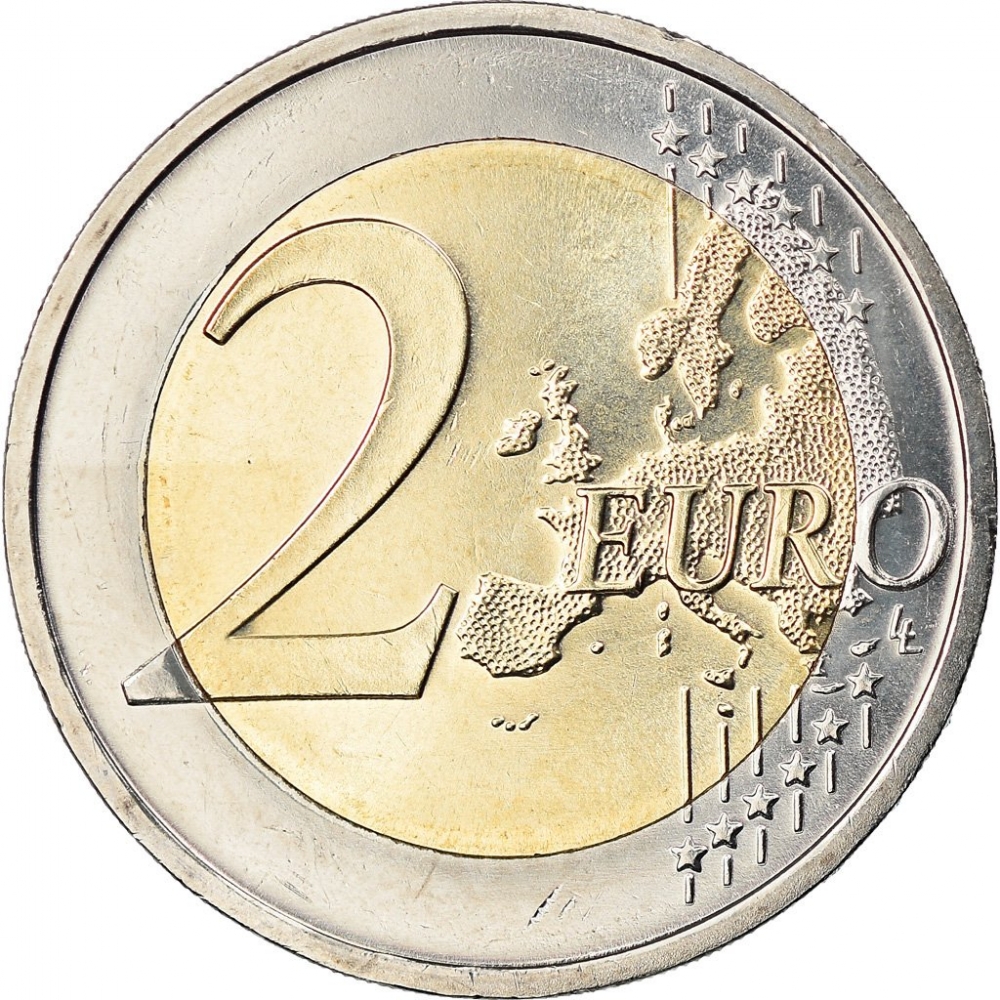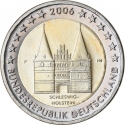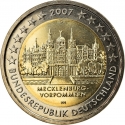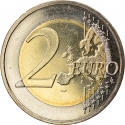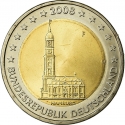You are about to finish your registration. Please check your mailbox (including spam folder). There should be a letter with a confirmation link. Check setting to make sure that your e-mail address is correct.
Send letter againDescription
The Federal Republic of Germany has 16 states (German: Bundesländer). Since 2006, Germany issues every year a Bundesländer coin for a specific state that has that’s year’s presidency of the Bundesrat.
Rhineland-Palatinate is located in western Germany. Mainz is the state capital and largest city, while other major cities include Ludwigshafen am Rhein, Koblenz, Trier, Kaiserslautern, and Worms. Rhineland-Palatinate is surrounded by the states of North Rhine-Westphalia, Saarland, Baden-Württemberg, and Hesse. It also borders three foreign countries: France, Luxembourg, and Belgium.
Rhineland-Palatinate was established in 1946 after World War II from the territory of the historically separate regions of the Free State of Prussia, People's State of Hesse, and Bavaria, by the French military administration in Allied-occupied Germany. Rhineland-Palatinate became part of the Federal Republic of Germany in 1949, and shared the country's only border with the Saar Protectorate until it was returned to German control in 1957.
Obverse

|
Depicts the Porta Nigra. Date on the top. Engraver's initials on the right. Mintmark (A for Berlin, D for Munich, F for Stuttgart, G for Karlsruhe, J for Hamburg) on the left. State name and national identifying mark (D for Deutschland / Germany) on the bottom. 2017 |
|---|---|
Reverse

|
A geographical map of Western Europe spans the outer ring and inner core on the right side of the coin. The inscription 2 EURO is superimposed over the map of Europe, with the numeral “2” located in an open field representing the eastern Atlantic Ocean. 2 EURO |
| Edge |
UNITY AND JUSTICE AND FREEDOM in German, Germany's national motto and the beginning of Germany's national anthem, followed by the Federal Eagle EINIGKEIT UND RECHT UND FREIHEIT |
2 Euro
German Federal States
Rhineland-Palatinate
Subscribe series
KM# 356
German Federal States
Rhineland-Palatinate
Swap now (4 offers)
Characteristics
| Type | Commemorative Issue (Circulating) |
| Material | Bi-Metallic |
| Ring | Cupronickel |
| Center | Nickel Brass |
| Weight | 8.5 g |
| Diameter | 25.75 mm |
| Thickness | 2.2 mm |
| Shape |
|
| Alignment | Medal |
| Mints |
Bavarian Central Mint (D) Berlin State Mint (A) Hamburg Mint (J) Karlsruhe State Mint (G) Stuttgart State Mint (F)
|

